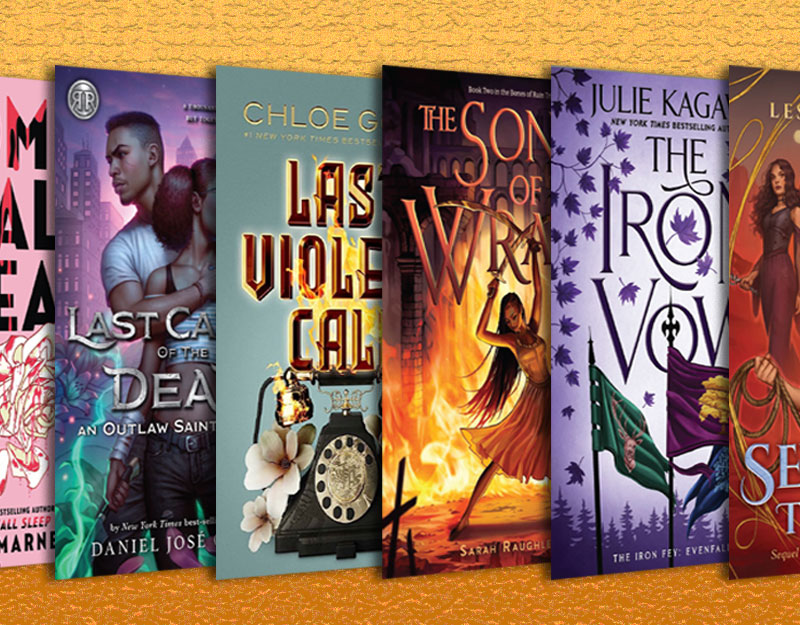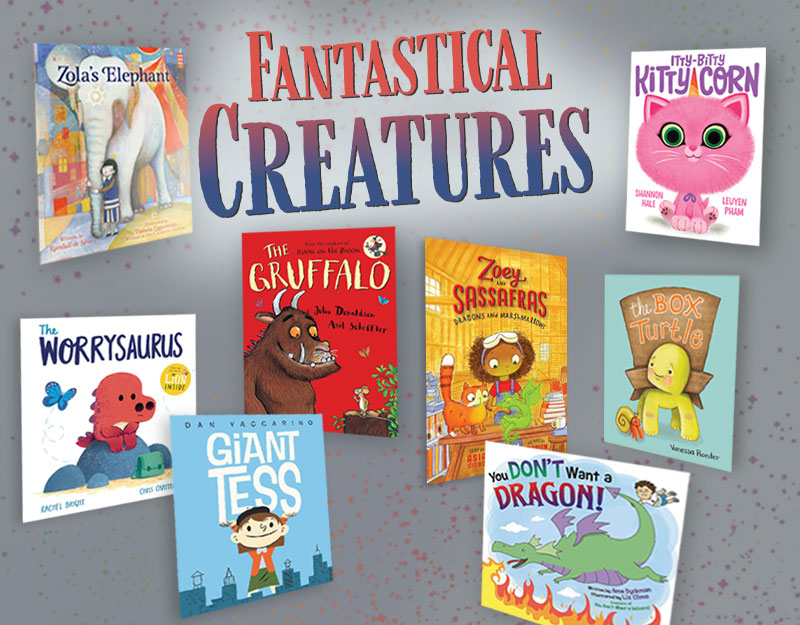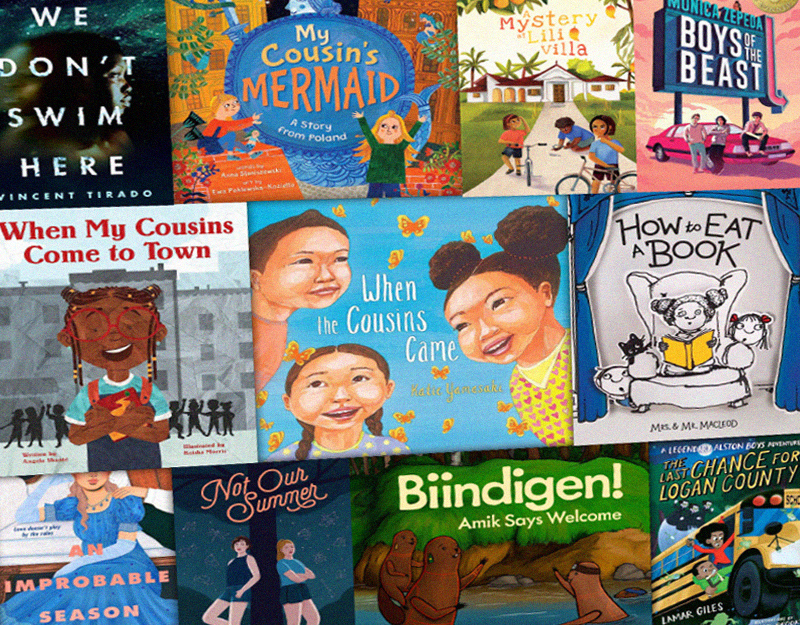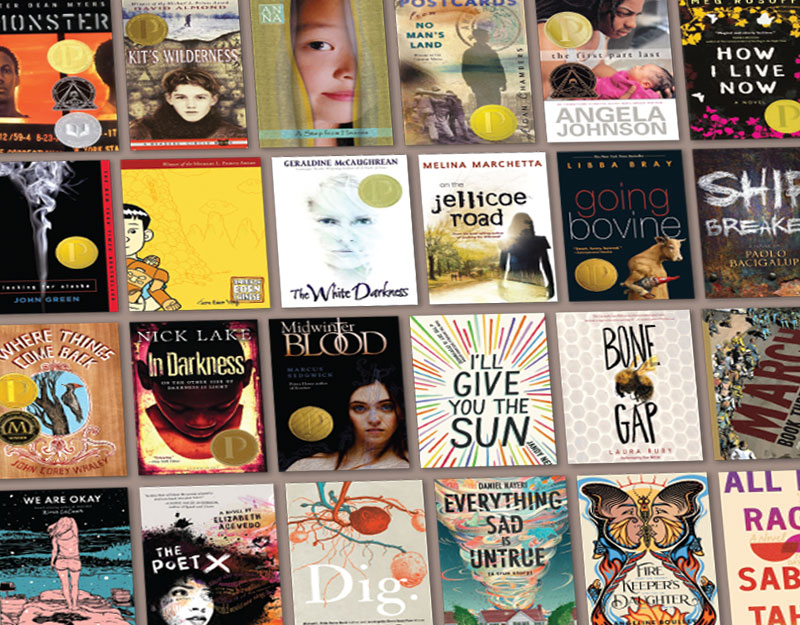Ocean Meets Sky
 Ocean Meets Sky
Ocean Meets Sky
Written and Illustrated by Terry and Eric Fan
Published in 2018 by Simon & Schuster Books for Young Readers
ISBN 978-1-4814-7037-7
Book Review
“Finn lived by the sea, and the sea lived by him.” In their second picture book collaboration as authors and illustrators, brothers Terry and Eric Fan have crafted another highly inventive tale that explores the adventurous spirit of a young boy in search of a magical place where the ocean meets the sky. Inspired by the stories of his late grandfather, Finn builds a boat and then takes a short nap below decks. The storyline then becomes reminiscent of Where the Wild Things Are as Finn wakes to realize the boat is rocking gently beneath him. He is guided by a great golden fish who shows him the way to where the ocean meets the sky. Along the way he encounters Library Islands full of enormous books, an island of giant shells, and a dazzling sea of moon jellies dancing. When he reaches his destination, readers are greeted by three double-page wordless spreads that inspire the inner adventure seeker in all of us. When Finn sees his grandfather’s face in the moon he has so many questions for him, but hears the voice of his mother calling to him. This gentle approach to the loss of family members pays tribute to the ways our imaginations can honor our loved ones. The illustrations, graphite and digitally colored, invite close reading and a myriad of questions for young readers. As in their debut picture book collaboration, The Night Gardener, this latest work is sure to inspire storytellers and story seekers in every classroom.
Teaching Ideas: Invitations for Your Classrooms
Grades K-5
Close Reading: Illustrations. Ocean Meets Sky is one of those wonderful picture books in which the more you look, the more you see. Invite your students to do a close reading of the illustrations, describing what they see, what it makes them think, and what it makes them wonder. What do your students notice about the relationship between the text and the illustrations? Many of the illustrations are double-page spreads which invite readers to linger across a whole scene. Encourage students to adopt some of the Fan brothers illustration techniques by incorporating a mix of single-page and double-page spreads in their own bookmaking. Support students to notice the ways in which the Fan brother use a variety of colors and how they play with the size of objects in novel ways.
ADVERTISEMENT
ADVERTISEMENT
Sailing Away Stories Text Set: Read Ocean Meets Sky along with Maurice Sendak’s classic Caldecott-winning picture book Where the Wild Things Are and Dan Santat’s Caldecott-winning The Adventures of Beekle: The Unimaginary Friend. What comparisons can students make between the storylines and the illustration styles of these three books? In what ways do they think the Fan Brothers may have been inspired by Sendak’s or Santat’s work? Support students to think about each of the characters’ experiences to think about these “sailing away” stories. What are each of the characters in search of as they set off on their adventures? Create an anchor chart that helps students compare and contrast these stories. Have students share in partnerships or small groups the places they would go if they could set sail.
Sailing Away Stories as Mentors for Writing. Using the three books in the above invitation, support students to write and illustrate their own sailing away stories. You may want to prompt them with questions like: If they fell asleep and ended up in a boat on their own, where would they go? What creatures would they meet? What would they think, say, or feel? How would the story end once they woke up? Encourage students to return to the three books again and again for inspiration for the storyline, the words, and the illustrations they want to create.
Author/Illustrator Study. Gather other books the Fan Brothers have authors and illustrated or just illustrated including The Night Gardener and The Antlered Ship. Compare the text and illustrations across the books. Students may particularly notice the use of color to create a whimsical effect across the books and the ways in which the Fan Brothers use a palette reflective of nature. Gather a variety of colored pencils, graphite pencils, and pens to have students incorporate the colors of nature into their illustrations of fictional stories to create whimsical effects by blurring parts of the landscape.
The Loss of a Loved One. Ocean Meets the Sky gently introduces young readers to the realities that beloved family members sometimes pass away but that their spirits live on. Be open to the possibility that some students may have personal connections with the loss of someone special in their own lives. If students choose to share about the loss of a loved one without any other prompting than what the book provides, support the class to listen and thank students for sharing this important point of connection. You can also use this as an opportunity to remind students that readers have connections to characters in many different ways. If you have students that seem comforted by this aspect of the story or are curious about other stories about people passing away, consider gathering other books on the topics of grief and loss such as The Goodbye Book by Todd Parr, The Heart and the Bottle by Oliver Jeffers, Badger’s Parting Gifts by Susan Varley, Ida, Always by Caron Levis, and Big Cat, Little Cat by Elisha Cooper.
ADVERTISEMENT
ADVERTISEMENT
Shared Reading and Oral Storytelling Across Pages. After reading aloud Ocean Meets Sky, you may want to consider using the book for a series of Shared Reading lessons where students participate in the oral reading of the story. The short sentences and repetition of key words make this an ideal book to project on a document camera to give students access to the print. You may also want to place the book in an area where students have access to reading and rereading the book. Some students may benefit from orally reading the story while others may benefit from oral storytelling where they touch each page with their finger and describe what they see by trying to be specific in their use of language.
“It’s A Good Day For…” Writing Prompt: Building an Optimistic Mindset. On the first page of the story, Finn reflects, “It’s a good day for sailing.” Use this sentence as an opportunity to have students craft their own “It’s a good day for ______” stories. Generate a class list of possibilities using an anchor chart. Then, encourage students to orally rehearse with a partner what will happen in their story. Finally, have students write and draw their stories across several pages mirroring a picture book format. Have a class celebration that honors the many places the imaginations of your students go. This invitation supports students as writers but it also supports them with an optimistic mindset and way of approaching their everyday lives. You may want to start a new class routine where each morning students get a chance to share “It’s a good day for ____” statements that reflect something they are looking forward to.
Ocean Meets Sky Class Mural. While each page in the book is ripe with possibilities for image study, the three double-page spreads of where the ocean meets the sky are mystifying. Explore these pages with students and then brainstorm things they imagine they would see if they were at the magical place where the ocean meets the sky. Using large butcher paper or bulletin board paper, support students to work collaboratively (possibly in partnerships or teams) to design and paint their own Ocean Meets Sky mural to hang in the school hallway. Create an invitation for people passing by to jot the artists a note about what they love about the mural and what they think they would see if they came to the place where the ocean meets the sky.
Critical Literacy.
Character Representations: Diversifying Stories. Finn and his grandfather are represented as having Asian heritage. While it is quite subtle in the story, it is noteworthy. Ocean Meets Sky is a book where the characters’ race or ethnicity is not central to the storyline. Rather, it adds depth and authenticity to the text particularly because the representation of Finn and his grandfather seem to draw from the authors’ own social locations. Take stock of your classroom library to notice whether the books represent diverse society, particularly books where the diversity of the characters is secondary to the story itself. Other books that share this quality that we have blogged about at The Classroom Bookshelf include Last Stop on Market Street, The Word Collector, Tiny Perfect Things, Over and Under the Pond, and Dreaming Up. Strive to provide books where children see visual representations of characters from all backgrounds in fictional stories rather than just historical or biographical works.
Further Explorations
Online Resources
Author/ Illustrator Website
KidLit Frenzy Interview with the Fan Brothers
Video of The Fan Brothers Collaborating
https://www.youtube.com/watch?v=7UeMab4U9p4
Books
Clark, M.H. (2018). Tiny, perfect things. Seattle, WA: Compendium.
Cooper, E. (2017). Big cat, little cat. New York, NY: MacMillan.
de la Peña , M. (2015). Last stop on Market Street. New York, NY: Penguin Books.
Fan, T. & E. (2016). The night gardener. New York, NY: Simon & Schuster Books for Young Readers.
Hale, C. (2012). Dreaming up: A celebration of building. New York, NY: Lee and Low Books.
Jeffers, O. (2010). The heart and the bottle. Philomel Books.
Levis, C. (2016). Ida, always. Atheneum Books for Young Readers.
Messner, K. (2017). Over and under the pond. San Francisco, CA: Chronicle Books.
Parr, T. (2015). The goodbye book. Little, Brown Books for Young Readers.
Reynolds, P. (2018). The word collector. New York, NY: Scholastic.
Sendak, M. (1963). Where the wild things are. New York, NY: HarperCollins.
Slater, D. (2017). The antlered ship. San Diego, CA: Beach Lane Books.
Varley, S. (1992). Badger’s parting gifts. HarperCollins.
Filed under: Fiction, Fiction Picture Books, Picture Books
About Katie Cunningham
Katie is a Professor of Literacy and English Education at Manhattanville College. There she is also the Director of the Advanced Certificate Program in Social and Emotional Learning and Whole Child Education. Her work focuses on children’s literature, joyful literacy methods, and literacy leadership. Katie is the author of Story: Still the Heart of Literacy Learning and co-author of Literacy Leadership in Changing Schools. Her book Start with Joy: Designing Literacy Learning for Student Happiness will be released September 2019. She is passionate about the power of stories to transform lives.
ADVERTISEMENT
ADVERTISEMENT
SLJ Blog Network
2024 Books from Pura Belpré Winners
Passover Postings! Chris Baron, Joshua S. Levy, and Naomi Milliner Discuss On All Other Nights
Team Unihorn and Woolly | This Week’s Comics
Parsing Religion in Public Schools
ADVERTISEMENT







